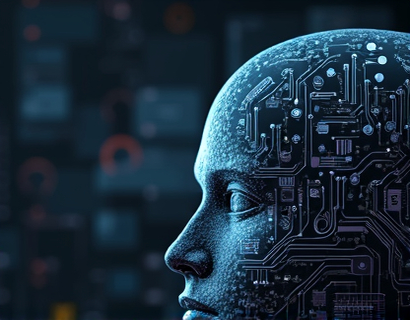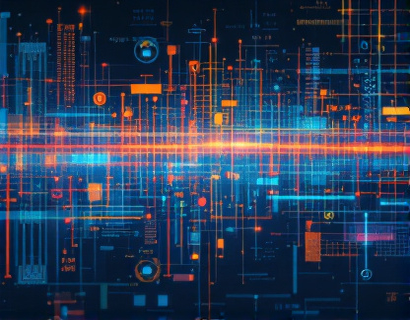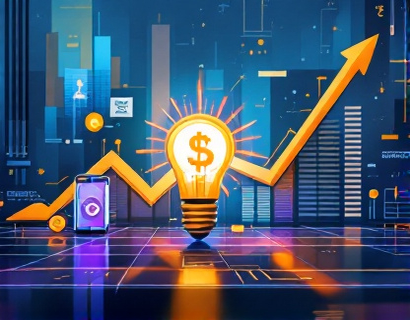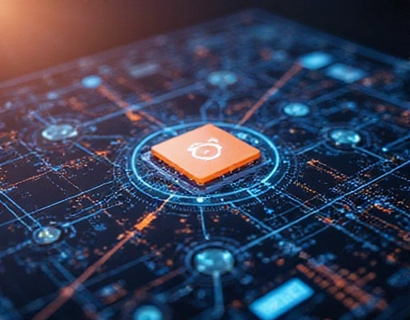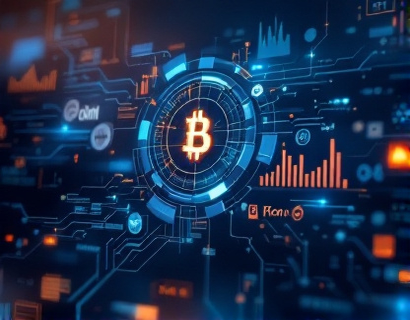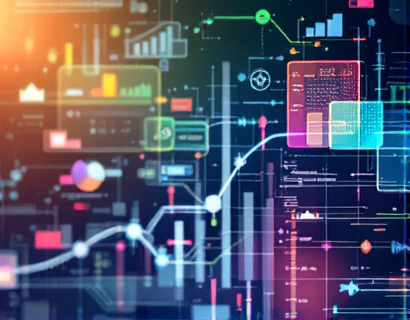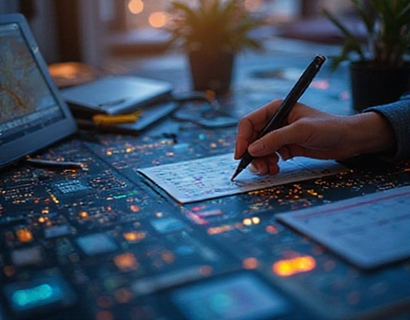Revolutionizing Digital Asset Management: The Power of Decentralized dApps for Cross-Blockchain Conversion
The landscape of blockchain technology is rapidly evolving, presenting both opportunities and challenges for professionals and enthusiasts alike. One of the most significant hurdles in this dynamic environment is the conversion of digital assets across different blockchains. Traditional methods often involve complex processes, high transaction fees, and potential security risks. However, a groundbreaking decentralized application, leveraging the power of smart contracts and decentralized networks, is set to transform the way we manage and convert digital assets. This article delves into the intricacies of this innovative solution, exploring its benefits, technical underpinnings, and the profound impact it is likely to have on the blockchain ecosystem.
Understanding the Need for Cross-Blockchain Asset Conversion
The diversity of blockchain platforms, each with its own set of features and use cases, has led to a fragmented digital asset landscape. Users often find themselves holding assets on different blockchains, each with unique protocols and standards. This fragmentation poses significant challenges, particularly when it comes to asset liquidity, interoperability, and management. The ability to seamlessly convert digital assets across these blockchains is crucial for maximizing value, enhancing liquidity, and ensuring a smooth user experience. Traditional solutions often fall short due to their centralized nature, high costs, and limited scalability.
Introducing the Decentralized Solution
The introduction of a decentralized application (dApp) represents a paradigm shift in digital asset management. This dApp is designed to operate on a decentralized network, eliminating the need for intermediaries and reducing transaction costs. By leveraging the collective computing power of the network, it ensures high availability and security, making it an attractive option for blockchain professionals and digital asset managers. The core functionality of this dApp revolves around the seamless conversion of digital assets from one blockchain to another, ensuring compatibility and efficiency.
Technical Foundations of the Decentralized dApp
The dApp is built on a robust blockchain infrastructure, utilizing smart contracts to automate and secure the asset conversion process. Smart contracts are self-executing contracts with the terms of the agreement directly written into code. They run on the blockchain, ensuring transparency, immutability, and trustless execution. The dApp's architecture is designed to interact with multiple blockchain networks, using a combination of cross-chain bridges and atomic swaps to facilitate asset conversion.
Cross-chain bridges are protocols that enable the transfer of assets between different blockchains. These bridges create a link between disparate blockchain ecosystems, allowing for the movement of tokens and other digital assets. Atomic swaps, on the other hand, are a protocol that enables direct, trustless exchanges of cryptocurrencies without the need for an intermediary. By integrating these technologies, the dApp ensures a smooth and secure conversion process, minimizing the risk of asset loss or theft.
Benefits of Using the Decentralized dApp
The adoption of this decentralized dApp offers numerous advantages over traditional asset conversion methods:
- Cost Efficiency: By eliminating intermediaries, the dApp significantly reduces transaction fees, making it a cost-effective solution for users.
- Security: The decentralized nature of the dApp enhances security, as there is no single point of failure. Smart contracts and cross-chain protocols ensure that transactions are secure and tamper-proof.
- Interoperability: The dApp supports a wide range of blockchain networks, ensuring that users can convert assets between different platforms seamlessly. This interoperability is crucial for a fragmented market like blockchain.
- User Control: Users maintain full control over their assets throughout the conversion process. The dApp does not hold any custody rights, ensuring that users remain in charge of their digital assets.
- Scalability: The decentralized architecture allows for easy scaling, accommodating a growing number of users and assets without compromising performance.
How the Decentralized dApp Works
The process of converting digital assets using the decentralized dApp is straightforward and user-friendly:
- Asset Selection: Users select the digital assets they wish to convert from their current blockchain.
- Conversion Request: The user initiates a conversion request through the dApp's interface, specifying the target blockchain and the desired asset type.
- Smart Contract Execution: The dApp generates a smart contract that outlines the conversion parameters. This contract is deployed on the source blockchain and begins the conversion process.
- Cross-Chain Transfer: The smart contract uses a cross-chain bridge to transfer the asset to the target blockchain. This transfer is atomic, meaning it either completes fully or not at all, ensuring asset integrity.
- Completion Notification: Once the conversion is complete, the user receives a notification, and the converted asset is available for use on the target blockchain.
Throughout this process, the dApp provides real-time updates and notifications, ensuring users are informed every step of the way. The use of decentralized storage solutions further enhances the reliability and availability of the conversion service.
Case Studies and Real-World Applications
To illustrate the practical benefits of this decentralized dApp, consider a few real-world scenarios:
One example involves a decentralized finance (DeFi) user who holds Ether on Ethereum and needs to use it on a Polygon-based DeFi platform. Traditionally, this would involve converting Ether to a compatible token on Ethereum, transferring it to Polygon, and then converting it back. Using the decentralized dApp, this process is streamlined into a single, seamless transaction, saving time and reducing costs.
Another scenario involves a blockchain developer who needs to test smart contracts on multiple platforms. The dApp allows for the quick and easy conversion of test assets, facilitating a more efficient development workflow. This capability is particularly valuable for teams working on cross-chain projects, ensuring that assets can be tested and deployed across different blockchains without hassle.
Challenges and Future Developments
While the decentralized dApp offers significant advantages, there are still challenges to address:
- Regulatory Compliance: Navigating the regulatory landscape is crucial. The dApp must comply with various jurisdictions' laws and regulations regarding digital assets.
- User Adoption: Educating users about the benefits and functionality of the dApp is essential for widespread adoption. User-friendly interfaces and comprehensive documentation can help overcome this challenge.
- Inter-Blockchain Standards: Standardization of cross-chain protocols and asset formats will enhance interoperability and ease of use. Industry collaboration is key to achieving this goal.
Looking ahead, the future of decentralized dApps for cross-blockchain asset conversion is promising. As more blockchains adopt interoperability standards and cross-chain technologies mature, the dApp's capabilities will expand. Integration with emerging technologies like layer 2 solutions and quantum-resistant algorithms will further enhance security and efficiency.
Conclusion
The introduction of a decentralized dApp for cross-blockchain asset conversion marks a significant milestone in the blockchain ecosystem. By addressing the pain points of traditional methods, this innovative solution offers a cost-effective, secure, and user-friendly approach to digital asset management. As the blockchain landscape continues to evolve, such dApps will play a crucial role in fostering greater interoperability and liquidity, ultimately benefiting professionals and enthusiasts alike. Embracing these advancements is essential for staying ahead in the dynamic world of blockchain technology.



